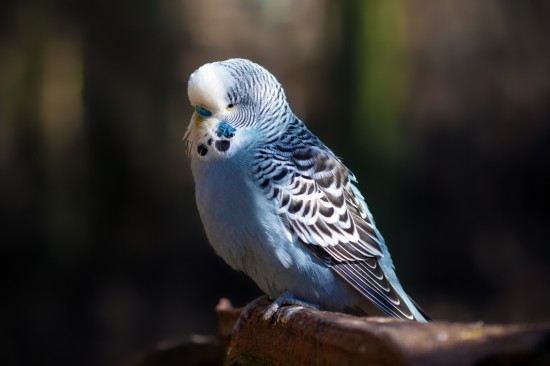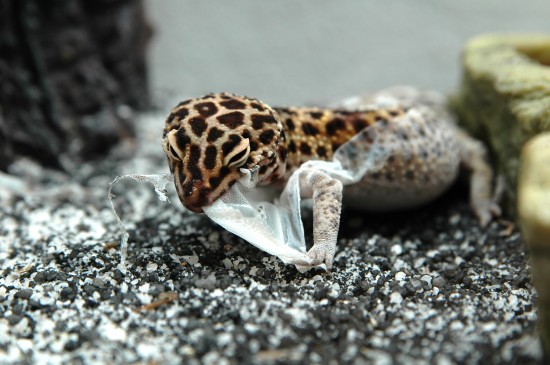

Normally active and full of chatter, an unwell budgie can sometimes be easily spotted by their changing behaviour. However, like all birds, budgies are adept at hiding weaknesses so can still manage to hide the symptoms of an illness. Observation can be the best tool, noticing change in behaviour or eating patterns that may be a sign something is wrong.
All birds can get tumours that can be benign or malignant much the same as humans do. They are also prone to lymphomas and a type of tumour called lipomas, of which budgies are on the list of most prone to. A lipoma is seen in overweight budgies as well as in older birds and is essentially a fatty tumour. These are found in the reproductive areas and kidneys of the birds and can put pressure on the sciatic nerve, resulting in lameness in the foot or whole leg.
Fibromas are another type of tumour found on the wing that need to be surgically removed. In the worst-case scenario, the entire wing may need to be amputated. Budgies can also get testicular cancer where the cere (the patch of skin around the nostrils above the beak) turns to a purple-brown colour. If this condition is diagnosed early enough, a drug called luprin can be given that can reduced the tumour and allow for a recovery.
Another common problem amongst budgies are deficiencies in their diet. This is a problem that can occur with any bird that eats a mainly seed diet as seeds can be high in fat and lack other vitamins and minerals. This is why getting your bird to eat green foods and fruit is very important.
Vitamin A, vitamin D and calcium deficiencies are the most commonly seen. One good way to help deal with this is to offer the bird sprouted seed. This is where the seed has been germinated in warm water and the tiny plant is beginning to sprout – the process of creating this sprout uses a lot of the fat reserves in the seed meaning that all that is left is the more healthy elements.
Calcium deficiency is potentially even more serious. Around 1.5% of a bird’s body is made from calcium that is used in transmit nerve impulses, create the shells of the eggs in female birds and contract the uterus when laying an egg. It is also vital in a range of other cellular and internal functions. Normal blood calcium levels in a budgie is 1.6-2.54 mmol/L. If you suspect your bird isn’t getting enough calcium from its diet or had recently been laying eggs, you can get a liquid calcium supplement to add to their water. This helps boost levels and stops the problem from worsening.
The giardia parasite lives in water, both drinking and bathing and then transfers to the intestinal tract of the bird. Budgies are on the list of those species most commonly affected by this bug. The bug is passed through the bird’s system and has a hard shell so can survive sometime in the environment. It is also one of the most common causes of waterborne diseases.
Symptoms include scratching as if they had fleas, most commonly on the flank and legs. They may pull their feathers and shriek as if in pain. They may also exhibit a behaviour known as pica – this is where they lick non-food items like toys and perches. Diarrhoea is a side-effect along with the production of mucus and both of these will have a strong, foul odour. Anorexia, weight loss, lethargy and depression can also be a symptom.
Giardia is a treatable condition and an anti-protozoal medication is typically used. To prevent reinfection, have the bird use a water dispenser rather than a bowl so that droppings can’t come into contact with the water. Finally, try getting your bird to eat some oregano – this little herb has loads of antioxidant properties and also has a natural anti-microbial compound that researchers have shown can kill giardia.
We often think of gout as a human disease but it is one that can affect birds also. It is the deposition of uric acid crystal on organs and in the joints and is caused by high levels of protein, calcium and a range of other conditions and factors. Another possible cause for gout in pet birds is the chemicals they are exposed to in their drinking water, some of which are pathogens that affect the kidneys as well.
To treat the condition, clean and filtered water is the first step. Your vet will advise you of medication that may be needed or dietary changes. Another natural option is a substance called Lily of the Desert Aloe, which is made into a formula added to soft foods. This has been shown to help some birds so may be worth discussing with your vet.
As with all birds, budgies can suffer from a range of problems around the reproductive system. We have mentioned calcium deficiency and the problems it causes but this can also work the other way. For example, excessive egg laying can lead to a calcium deficiency and all the associated problems so always make sure your female bird isn’t laying too much. You cannot stop a bird laying and simply removing the male bird or the nest box will only cause stress. However, when he lays eggs, whether they are fertile or not, let her sit her normal term on them. This gives her body a chance to recover from the egg laying.
Egg binding is another problem wrapped up with the calcium deficiency issue and occurs when the bird, for one reason or another, cannot lay the egg. It can be fatal so if your bird shows signs of an enlarged area around the vent (where the egg comes out), is lethargic, won’t eat or generally looks unwell, it is best to seek out a vet’s advice quickly to help save her life.
 What difference can a dog make in your life
What difference can a dog make in your life
Do
What difference can a dog make in your life
What difference can a dog make in your life
Do
 Enjoy the outdoors with your dog this autumn with an airline approved dog carrier
Enjoy the outdoors with your dog this autumn with an airli
Enjoy the outdoors with your dog this autumn with an airline approved dog carrier
Enjoy the outdoors with your dog this autumn with an airli
 Can Cats Be Fed A Vegan Diet?
Can Cats Be Fed A
Can Cats Be Fed A Vegan Diet?
Can Cats Be Fed A
 What To Do When A Reptile Suffers An Incomplete Shed
What To Do When A
What To Do When A Reptile Suffers An Incomplete Shed
What To Do When A
 Could You Foster A Pet?
Could You Foster
Could You Foster A Pet?
Could You Foster
Copyright © 2005-2016 Pet Information All Rights Reserved
Contact us: www162date@outlook.com